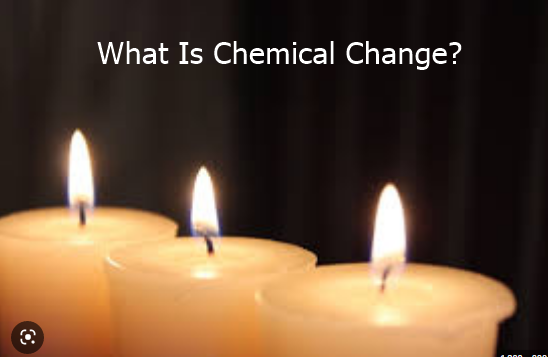ARTICLE AD BOX
Knowing what chemical change is all about is our concern on this page. However, on this page, we will take you on a tour of what chemical change is all about in the field of technology and how it easily occurs in an environment.
We will also discuss the various types of chemical reactions, their components, and a variety of other topics.

What Is Chemical Change?
Chemical changes happen when a substance consolidates with another to shape another substance, a process called synthetic union; on the other hand, synthetic deterioration forms at least two unique substances.
These cycles are called compound responses and, as a rule, are not reversible except by additional substance responses. A few responses produce heat and are called exothermic responses, while others might expect intensity to empower the response, which are called endothermic responses. Understanding synthetic changes is a significant piece of the study of science.
At the point when substance responses happen, the molecules are modified, and the response is joined by an energy change as new items are produced.
An illustration of a synthetic change is the response among sodium and water to deliver sodium hydroxide and hydrogen. Such a lot of energy is delivered that the hydrogen gas unexpectedly consumes air.
This is an illustration of a compound change on the grounds that the final results are synthetically not quite the same as the substances before the compound response.
When we talk about chemical change, we will not forget to describe the type of chemical change.
Types Of Chemical Change
- Organic Change
- Inorganic Change
- Biochemical Change
Organic Or Natural Changes
Natural science is worried about the science of carbon and the components and compounds to which it responds.
All these mixtures incorporate mineral oil and its items, and a large part of them is the result of enterprises producing drugs, paints, cleansers, beauty care products, fills, and so forth.
Common examples of natural synthetic changes include breaking down heavy hydrocarbons at a petroleum treatment facility to produce more gas from unrefined petroleum, as gas is more popular than heavier hydrocarbons, such as leftover fuel oils. Different responses incorporate, methylation, buildup responses, polymerization, halogenation
Types of Organic
Sorts of Natural Responses
Replacement response.
Disposal response.
Expansion response.
Revolutionary responses.
Oxidation-Decrease Responses.
Inorganic Change
Inorganic science depicts the responses of components and mixtures that, as a general rule, don't include carbon.
The advances are frequently made in research facilities or, on a larger scale, in significant ventures.
Ordinary kinds of progress incorporate balance (blending a corrosive in with a base, bringing about water and salt), oxidization including burning, redox responses
Types Of Inorganic Changes
Inorganic mixtures can be ordered into four significant classes, which are;
- salts,
- bases,
- corrosive,
- and water
Biochemical change
Organic chemistry manages the science of the development and action of living creatures. It is a science where most responses are constrained by complex proteins called chemicals and are directed and restricted by chemicals.
The science is extremely complicated in every case and is still not fully understood.
Disintegration of natural material is likewise within the scope of organic chemistry, although in this situation it is the development and action of growths, microorganisms, and other miniature living beings that are involved.
Ordinary kinds of progress incorporate the cycles engaged with photosynthesis, a cycle in which carbon dioxide and water are changed into sugars and oxygen by plants, processing in which energy rich materials are utilized by organic entities to develop and move, the Krebs cycle which frees energy from put away holds, protein combination which empowers organic entities to develop utilizing processes constrained by RNA,
Proof Of Chemical Change
When you want to know if there are changes that occur during a chemical reaction, certainly there is proof for that. such as;
1. the decay of natural matter (for instance, spoiling food).
2. The change is troublesome or difficult to turn around
3. change in temperature or energy, like the creation (exothermic) or misfortune (endothermic) of intensity.
4. formation of insoluble particles
5. Change of synthesis — paper going to debris when consumed
light, as well as intensity, radiated.
6. gas formation, which frequently manifests as air pockets in fluids. etc.
The Components Of Chemical Reactions
In a synthetic change, another compound is shaped; however, in an actual change, the substance has an impact on its reality. Reactants are particles or particles or atoms that respond to frame another substance; items are newly formed iotas or particles.
A substance response keeps the law of preservation of mass in place.

.png)
.png)




.png)
 English (US) ·
English (US) ·